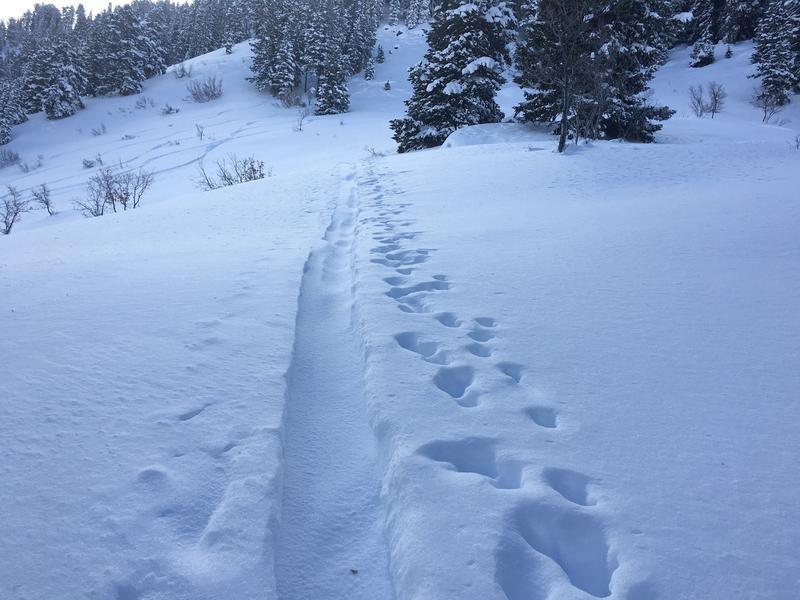Observation Date
12/28/2019
Observer Name
Staples / Meisenheimer
Region
Salt Lake » Big Cottonwood Canyon » Broads Fork/Mill B
Location Name or Route
Broads Fork to Mill B
Comments
At 8,900' we did find a very poor snowpack structure. Total depth was about 140 cm with increasing densities down to the old weak Oct/Nov snow. ECTX and PST 35/105 were the tests we performed. It only took another couple hundred feet in elevation to find poor snowpack structure. Link to yesterday's observation can be found HERE.
Video
Photo: Mark Staples taking in a little exposure and appreciating the view into Stairs Gulch

Despite a LOW danger below 9500 feet, we did find a poor snowpack structure. The weak layer is buried deeply which means it is slowly gaining strength and is harder to trigger an avalanche on this layer.
To stack the odds in our favor, we decided to avoid a direct entrance to the slide path and instead descended a ridge and entered the slide path just a bit lower to reduce the odds of triggering an avalanche. The upper part of the path is rocky, shallow, and much steeper.
Video
Winds have generally been light in many areas. However, in the distance, we could spot trees stripped of their snow which told us that winds had likely drifted snow and formed soft wind slabs that could avalanche.
Winds had blown a little stronger in the morning which was evident by a small amount of snow that had drifted into the skin track.

Today's Observed Danger Rating
Low
Tomorrows Estimated Danger Rating
None
Coordinates






